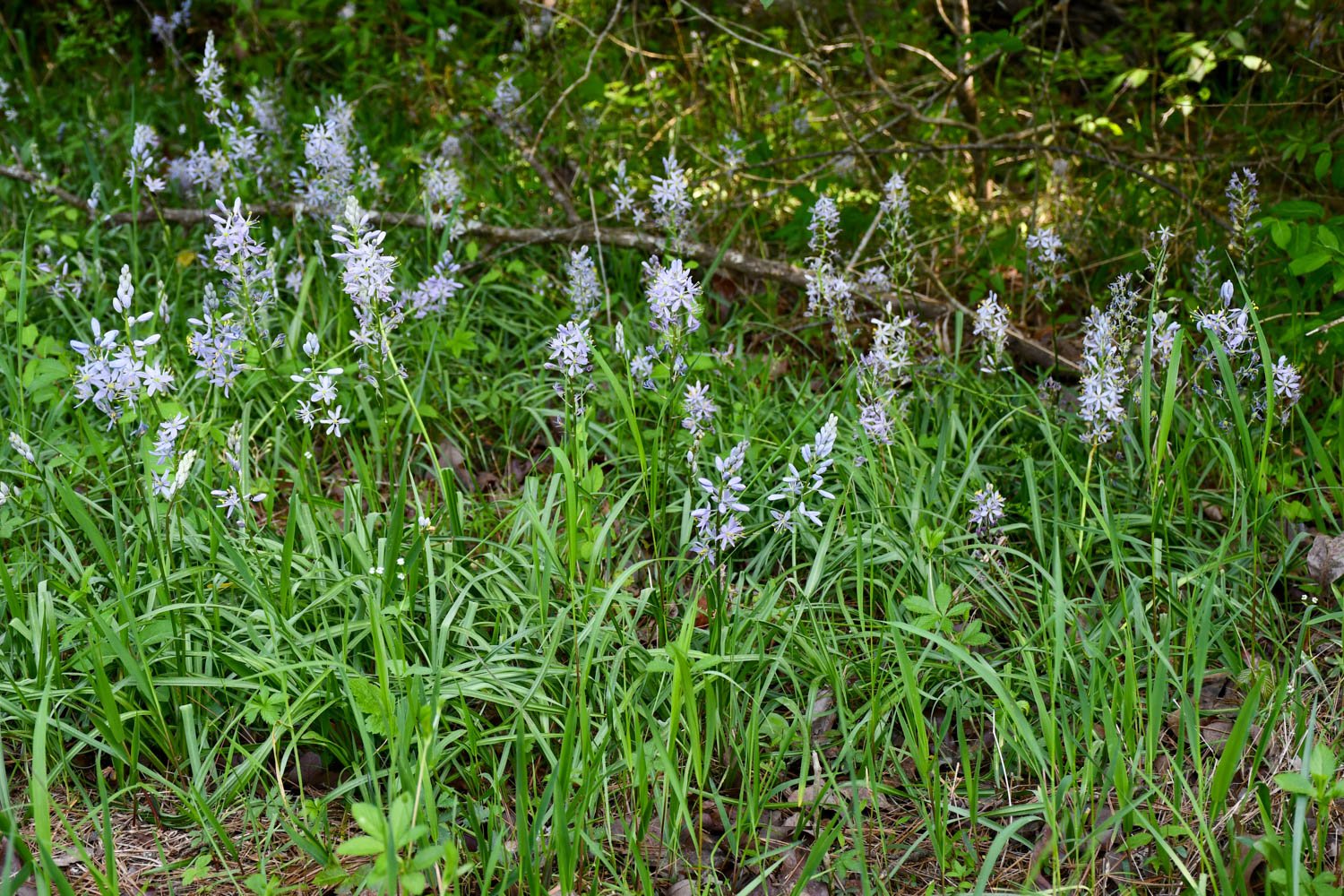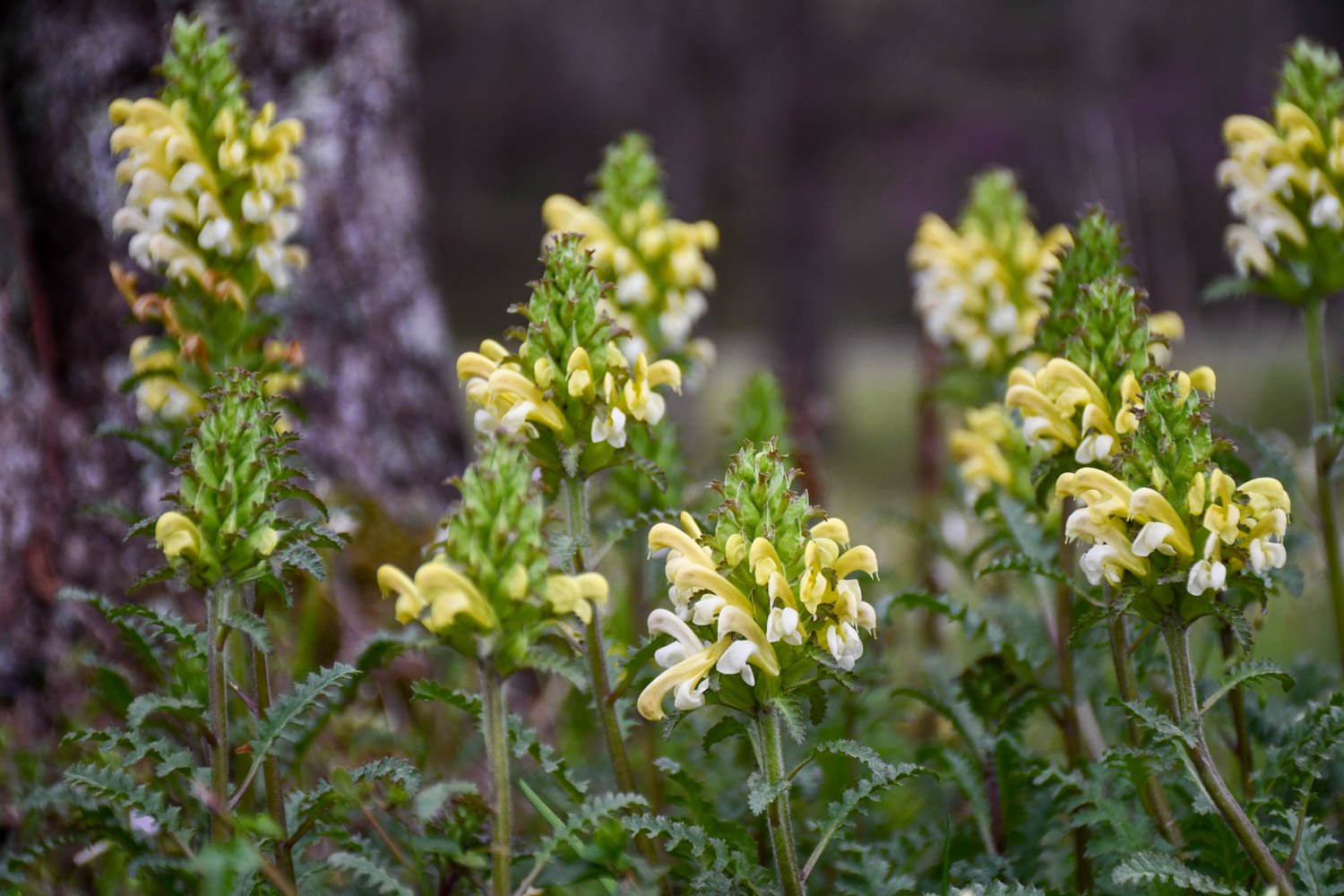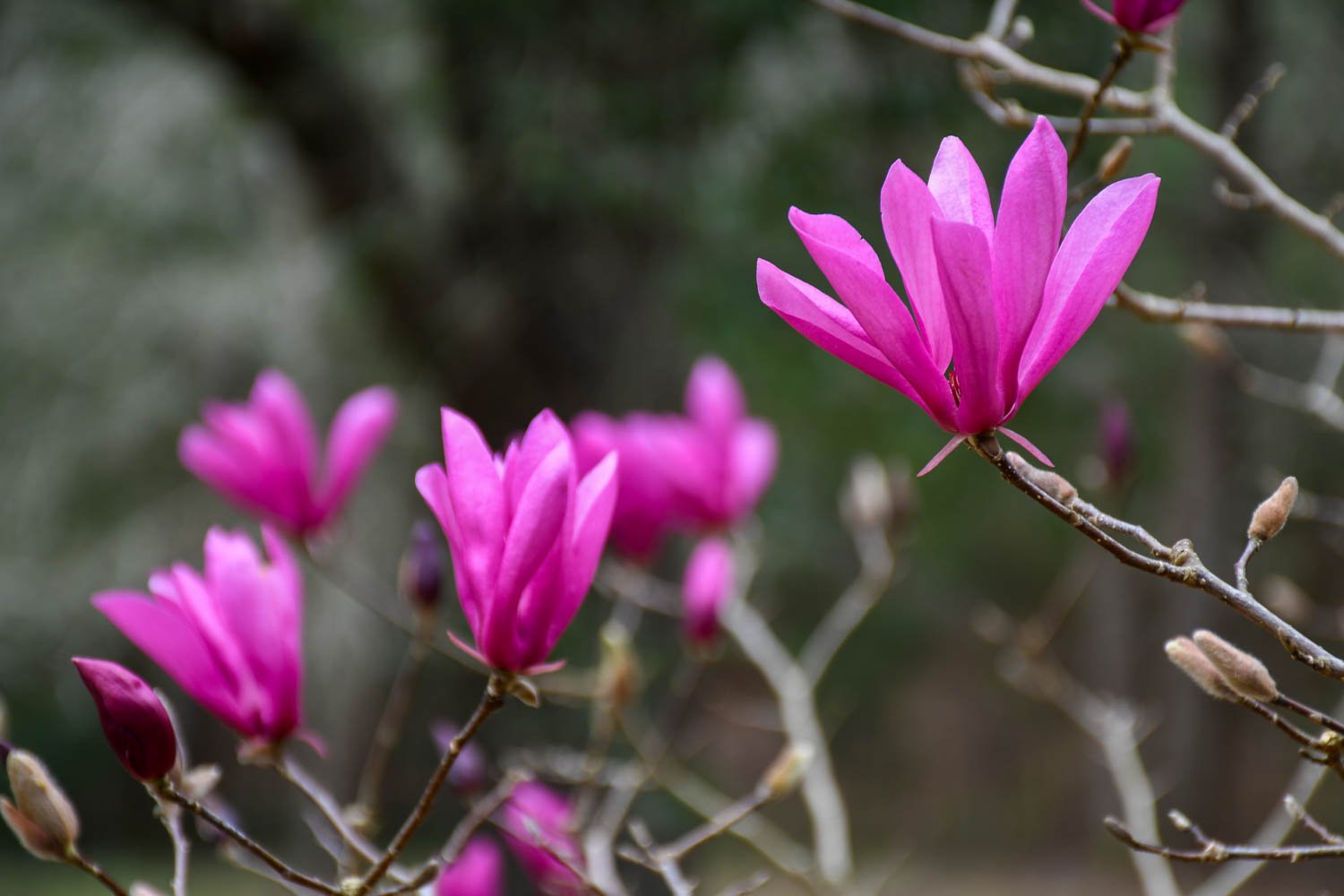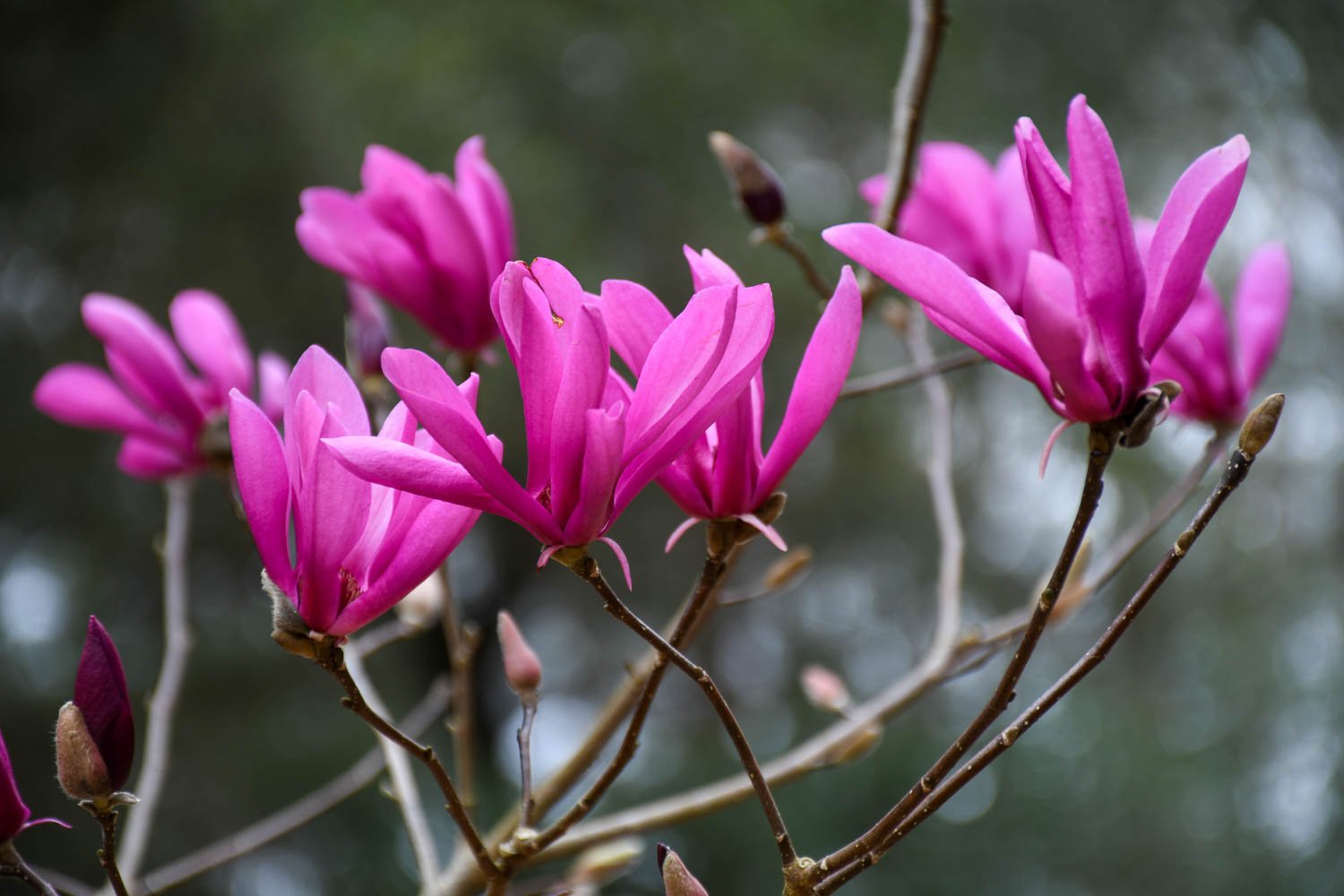This post is part 2 of 2 of a weekend expedition to Arkansas to see Amsonia hubrichtii in the wild. You can read part 1 here.
Saturday arrived, and the question still nagged at me. How could Amsonia hubrichtii, a plant that grows so well in various locations in the eastern US, be confined to such a small area in Oklahoma and Arkansas? Sure, it’s not unheard of endemics with narrow ranges like Magnolia macrophylla var. ashei (Ashe’s magnolia) and Echinacea tennesseensis (Tennessee coneflower) being able to grow in a broader region. But, why was the Amsonia just found on the edge of streams? If it can grow in gravel gardens, why not find plants further from the water in the wild?
We (being Thomas Rainer, my wife Karen, and me) decided to spend the day searching out other Amsonia hubrichtii sites west of Hot Springs where Arkansas bluestar had been reported to occur. As we drove along, I had a chance to explore Thomas’s interests more on this species and in particular what brought him all the way out from D.C. to see this Amsonia in situ.
He shared that he loved to see plants in the wild, and it was a nice get away trip to see friends and family along the way. But, he was curious for this species in particular because near his house Amsonia hubrichtii was planted in a rain garden. During much of the year it looked fine, but later in the season, the plants really seemed to struggle. Based on the barren we saw the day before, he was already postulating that maybe the species needs to be drier in the summer, or have more oxygenation in the root zone.
Our first stop was to another shale barren hidden amongst downed junipers that were felled to prevent them from shading out the understory. Accessing it was like trying to find a way into the secret garden. Every opening we tried was blocked by a web of crisscrossing branches. Eventually, we found a way in, and before us was a barren covered with Valerianella nuttaliana (Nuttall’s cornsalad), Nothoscordum bivalve (crow poison), a Tradescantia species (spiderwort), and Marshallia caespitosa (Barbara’s buttons) that was just about to bloom. The rock face slope faced north, and at the base of the outcrop was a stream. From the stream northward was a thicket of trees and shrubs. And, right alongside the stream were a few clumps of Amsonia hubrichtii.
Valerianella nuttalliana again provides a light dusting of white on this outcrop. To the right is the stream where Amsonia hubrichtii occurs.
Amsonia hubrichtii hugs the stream side in bud. Notice how last year’s stems all face downstream, evidence of heavier water flow at times.
A close up of the patchwork of lichen, Valerianella nuttalliana, a Tradescantia species, and Marshallia caespitosa.
So, this habitat was quite similar to what we saw yesterday at Middle Fork Barrens Natural Site. The Amsonia was growing in an open area, right next to exposed rock alongside a stream. Again, this was scour habitat, the stems from last year pointing downstream to indicate the water was forceful enough to bend their branches.
We left and headed to the next location we had for Arkansas bluestar that was right alongside the Ouachita River. We drove to the site, parked in the shade of deciduous trees, and looked down the twenty foot embankment to the water through the understory of Arundinaria gigantea (giant cane) and Chasmanthium latifolium (Northern sea oats). Growing up near the north fork of the Obion River in Tennessee, this habitat looked quite familiar. Thomas offered to go first and see if there were any Amsonia, and when he got to the bottom, sure enough right where we had GPS coordinates there were three plants. Two plants were easily accessible, and a third was a little further upstream where we couldn’t access, even though I tried and almost slipped in the water.
Amsonia hubrichtii hugs the bank of the Ouachita River.
This location piqued our interest because it was very different from the previous two barren sites we had seen over the past two days. The plant was once again growing on waters edge with some rocks present, but these plants were on a river, not some dainty stream. I gave the plants a gentle tug, and they were well rooted in. I mean, they had to be, right? In this scour habitat, we could tell the water during flood events was well over our heads. It was this site that got us thinking it wasn’t a plant that needed barrens, but perhaps a species that somehow needed water.
It began to click with me something I had read years ago in Rick Darke’s nice synopsis of the bluestars in The Plantsman. Amsonia hubrichtii was discovered by Leslie Hubricht, a scientist who studied freshwater mussels. I had long wondered how a person who researched gastropods could be the discoverer, but now I saw how. If a scientist was working these water habitats, one would encounter this Amsonia species and recognize that it was different. Leslie had also worked at the Missouri Botanical Garden as a research assistant for seven years early in his life, so he would have likely been primed to have an eye for new plant species.
Our next stop to see Amsonia hubrichtii happened by chance. We stopped to photograph a nice roadside spot of Baptisia sphaerocarpa. While mine in Texas had just finished flowering, here the screaming yellow flowers were just starting to pop. As we walked around the site down to the river, we saw a nice carpet of Nemophila phacelioides (baby blue eyes) that we could tell had be recently submerged. Again, right there on a gravelly bar was Amsonia hubrichtii.
A lone Amsonia hubrichtii glows in the afternoon light on a gravel bar.
The Baptisia sphaerocarpa that prompted our stop at this site. I delight in seeing their brilliant yellow flowers. The haze in the foreground is Minuartia patula.
Minuartia patula in full spring display
My first encounter with Nemophila phacelioides in the wild. I was quite surprised to see the wet conditions where baby blue eyes was growing.
While I’ve tried to keep the discussion focused on Amsonia and keep the other gems we saw at the end of this post, I have to share this amazing field of Baptisia sphaerocarpa (yellow wild indigo). It was funny how we saw it. We rounded a curve, and suddenly both gasped in excitement at a field of the yellow wild indigo. We were about a week early. Underneath in spots was a carpet of purple Phacelia, which provided a nice natural color contrast. Thomas and I talked about how this population was likely possible because of management, i.e. the owners waiting long enough to allow the plants to come into flower and set seed. I can’t wait to come back through this area sometime in early May and see it all in bloom.
There were thousands of Baptisia sphaerocarpa in this little over-an-acre field.
I enjoyed the contrast of the yellow Baptisia flowers with the purple Phacelia growing underneath.
A little further down the road, a few billows of blue caught our eye so we stopped to investigate. These scattered plants became the best Amsonia hubrichtii we had seen in flower. The bridge made it feel as if we were in some urban sprawl naturalistic planting where Amsonia grows so well, but no, we were right here next to a cattle pasture in Arkansas. Again, the plant was mere feet from the water’s edge.
The starkness of the bridge was a nice backdrop for the feathery Amsonia hubrichtii foliage.
Thomas posed with them…
…and then I posed with them. Botanizing boys starry-eyed over their bluestars, I suppose.
Our last stop was to see Vernonia lettermannii (narrow-leaf ironweed). We made a point to find at least one location of narrow-leaf ironweed because Eric who graciously showed us around the day before said they occurred in the same spots. He noted that both had narrow foliage that that doesn’t get as damaged in flood waters as a thicker leaf could.
We parked, and there on the same gravel bar we found both Amsonia hubrichtii and Vernonia lettermannii growing mere feet apart. The Amsonia was further along in growth, and both were located again in scour habitat.
Our last stop featured a lovely stream, and here on the bank we found Amsonia hubrichtii and Vernonia lettermannii.
Vernonia lettermannii emerges amongst gravel on the edge of the river.
With the sun getting low, we left this site to head back to Hot Springs to grab a final dinner and say our goodbyes after a marvelous trip.
So, after everything we’ve seen and some chance to think on it, here’s my hypothesis of its narrow range and proximity to water. I think that Amsonia hubrichtii seed are water dispersed. My guess is that it doesn’t need proximity to water to survive, BUT it needs water for seed dispersal. I’ve searched for any scientific literature I can find on Amsonia seed dispersal. While I can’t find anything in particular on Amsonia hubrichtii, I can find that Amsonia grandiflora (large-flowered bluestar) has corky seeds that float and are dispersed by water. Also, this dissertation on Amsonia kearneyana (Kearney’s bluestar) stated the following: “It should be mentioned that Amsonia [kearneyana] seeds, though large, become buoyant when wet. When seeds were soaked in a clear beaker, they initially sunk to the bottom, but then floated to the water’s surface within a few minutes.” So, if two Amsonia species rely on water for seed dispersal, other species in the genus could, too, and that could explain why we kept seeing Amsonia hubrichtii near moving water.
I don’t think the narrow foliage is the reason they grow along stream sides. I think the narrow leaves are more a factor of drought tolerance. Looking across the plant world, smaller leaves usually correspond to more drought tolerance. Even the four varieties within the Amsonia tabernaemontana complex show this trend. Plants in the eastern US where precipitation is more abundant have wider leaves than those in the western part of the range. I will add I once heard my trip companion Thomas say in a presentation that the species that grow in a location basically haven’t been killed by what mother nature has thrown at them yet. So, while Amsonia tabernaemontana might get ripped to shreds by floodwaters right along a stream, maybe the narrow foliage of Amsonia hubrichtii is damaged less and in drier times is more drought tolerant.
The biggest question for me is why hasn’t it spread further downstream? Why hasn’t it shown up yet in Louisiana where the Ouachita River flows into the Mississippi? Does it need just enough stress to find a site to grow, but parts further south the competition is too great?
My last comment is I would love to see a phylogenetic tree to see which Amsonia species Amsonia hubrichtii is most closely related. I think that would give us some idea of how and when it evolved.
After returning home, I walked into the garden to find my Amsonia hubrichtii that I brought from Tennessee many years ago doing better than I had ever seen it. The drier spring had kept its foliage clean of the blasted rust that plagues this genera in our area, but I knew what was coming. The dry summer usually causes the foliage to all drop off. I smiled looking at my little Arkansas bluestar, happy to better understand the conditions it needs. I then looked up and started eyeing an area right along where water moves through our yard. Maybe my plant has some distant memory of a great-grandparent bluestar growing along the waterways in Arkansas, and perhaps I can find just the spot for it to grow even better.
OTHER ARKANSAS GEMS
While I tried to focus this post mostly on Arkansas bluestar, there were other great plants we saw on day 2. Here’s a photolog with captions.
We saw Geranium maculatum a few times during the day, and habitats ranged from a craggy hillside to a floodplain forest.
A new to me milkweed was Asclepias quadrifolia. The blushed pink flowers were so cute growing in the rocky understory.
My first time seeing Monarda russeliana in flower. We saw red-purple beebalm here and there in shadier sites.
I loved this patch of Silene virginica and how much thicker it was than the scattered plants we had seen the day before.
We kept seeing this lovely white phlox. To the best of my knowledge this species is just a white form of Phlox pilosa. But, it felt too frequent to just be a color form. And, we really didn’t see any grading between the pink and the white, which made me think there’s little hybridizing. The search for its identity continues.
Not quite the Amsonia we were looking for, but this specimen was a nice floriferous form of Amsonia tabernaemontana.
A nice stand of Packera (likely Packera obovata) grows on a bend in the creek. We talked about what a great early spring flowering perennial this species was and how it provided a good green groundcover.
Osmundastrum cinnamomeum is one of my favorite ferns to see in the wild. Cinnamon fern’s leaves are so regal, and I love the bronzed spore fronds.
The silvery leaves of Heuchera americana growing where I so frequently see coral bells in the wild, finding purchase right along a cliff face.
I got giddy spying Magnolia tripetala in flower alongside a stream. Seeing umbrella magnolia was somewhat unexpected as I forgot that it has this disjunction population in Arkansas and Oklahoma.
Everywhere we went we saw Penstemon arkansanus. This roadside spot was one of the thicker populations we saw of Arkansas beardtongue.
Near the edge of a forest we observed this nice stand of Camassia scilloides. I admire wild hyacinth as a native bulbous species that is frequently found in forest floodplains.
We found a few Ceanothus americanus on a hillside. New Jersey tea is an underutilized native subshrub with dainty white inflorescences.






















































































